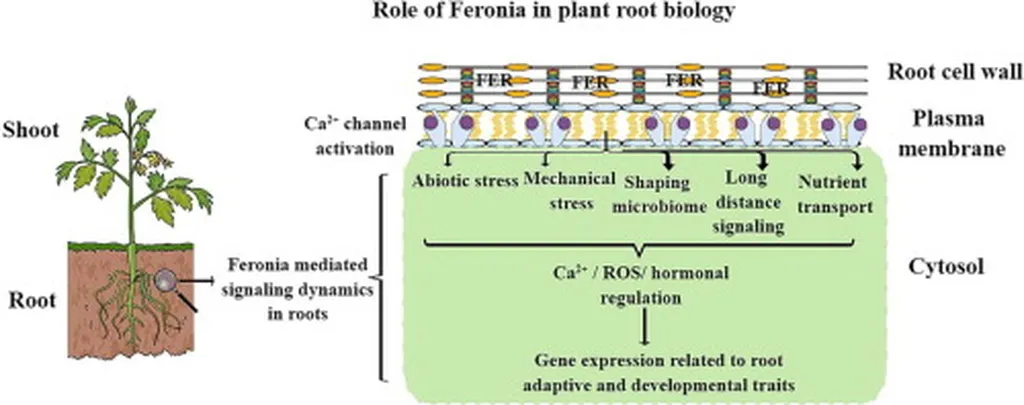In the heart of every plant lies a complex network of roots, performing a symphony of functions that sustain life and growth. Yet, despite their critical role, roots have long been the overlooked understudies in the world of crop improvement. A recent review published in the *Journal of Advanced Research* (translated to English as “Journal of Advanced Research”) aims to change that, shedding light on the molecular mechanisms that govern root biology and their potential to revolutionize agriculture and the energy sector.
At the forefront of this research is Sajad Ali, a scientist affiliated with the Department of Biotechnology at Yeungnam University in South Korea and the Department of Biological Sciences at King Faisal University in Saudi Arabia. Ali and his team have delved into the role of FERONIA (FER), a cell wall receptor-like kinase (RLK) that acts as a molecular bridge between the plant’s external environment and its internal signaling pathways.
“FER is like a multitasking sensor,” explains Ali. “It’s involved in root development, sensing abiotic stressors, mechanical stimuli, nutrient transport, and even shaping the microbiome. It’s a key player in the root’s response to its environment.”
The review highlights how FER modulates distinct root responses through interactions with Rapid Alkalinization Factor (RALF) peptides, calcium, reactive oxygen species (ROS), and hormonal signaling pathways. Understanding these mechanisms could lead to the development of crops with enhanced root systems, better equipped to withstand environmental stressors and improve nutrient uptake.
The implications for the energy sector are significant. Crops with improved root systems could lead to more efficient bioenergy feedstocks, enhancing the production of biofuels and reducing our reliance on fossil fuels. Moreover, a deeper understanding of root biology could pave the way for crops that can thrive in marginal lands, further expanding the potential for sustainable energy production.
“By focusing on root biology, we can unlock new avenues for crop improvement,” says Ali. “This could lead to the development of climate-resilient and high-yielding crops, which are crucial for food security and sustainable energy production.”
The review also identifies several outstanding questions that warrant future investigation, providing a roadmap for researchers in the field. As our understanding of root biology continues to grow, so too will the potential for innovative solutions to some of our most pressing agricultural and energy challenges.
In the words of the review, this comprehensive information on the role of FER in root biology can be utilized for the development of future climate-resilient and high-yielding crops based on the modified root system. The journey to uncover the secrets of the root has only just begun, but the potential rewards are immense.

